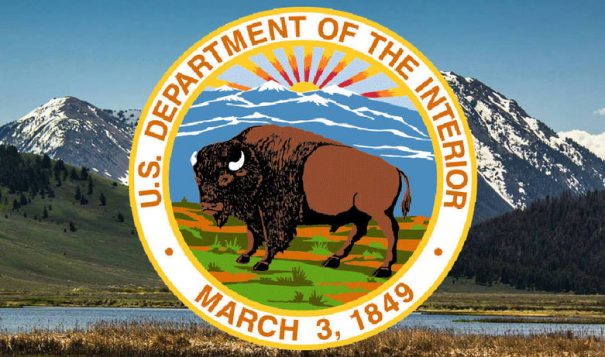Assistant Secretary Tara Mac Lean Sweeney Announces 2018 NABDI Grants Awarded To 12 American Indian and Alaska Native Tribes Totaling $400,000
 U.S. Department of the Interior
U.S. Department of the Interior
WASHINGTON – Assistant Secretary – Indian Affairs Tara Mac Lean Sweeney announced today that the Office of Indian Energy and Economic Development (IEED) has awarded business development grants totaling $400,000 to 12 federally recognized American Indian and Alaska Native tribes.
The awards from IEED’s Native American Business Development Institute (NABDI) Feasibility Study Program will enable tribal leaders to better evaluate and identify viable economic opportunities for their communities.
“These grants are an important tool for tribal leaders to use in scoping out or planning how to develop their tribes’ economic assets to benefit their communities,” Sweeney said. “This year’s grants will fund feasibility studies covering a wide range of economic development projects that have the potential to create, develop, diversify and strengthen tribal economies for their recipients.”
NABDI awards fund feasibility studies that weigh the viability and risks of an economic development project, opportunity, enterprise, or business or the practicality of a technology a tribe may choose to pursue. The studies may be used to determine the likelihood of success for businesses in specific American Indian and Alaska Native communities.
When performed by a reputable third party, an economic development feasibility study also can be used to help persuade lenders and investors to provide financial backing. A study that concludes a project is worthwhile and financially sustainable can often fulfill many of the lender’s or investor’s due diligence requirements by answering questions about a project’s chances of success, resulting in a more rapid loan approval or better loan terms. Feasibility studies can also be used to examine the credibility of a project promoter and claims made regarding a specific project.
Grants are awarded on the basis of a proposal’s potential to create jobs for tribal members and stimulate economies in Native American communities. During this year’s NABDI funding cycle, IEED received 50 proposal requests totaling $2,423,687.
The grant recipients and award amounts announced today are:
- Aleut Community of St. Paul Island, Alaska: $45,398 to study the feasibility of methods to attract visitation, modern accommodations, attractions, and food service facilities required to develop a local tourism industry.
- Angoon Community Association, Alaska: $38,650 to study the feasibility of developing a local cultural tourism industry.
- Catawba Indian Nation, South Carolina: $35,000 to study the feasibility of developing a strategically located parcel of land that offers the potential for an industrial park and manufacturing hub that will foster tribal enterprises and attract investment.
- Confederated Tribes of the Goshute Reservation, Nevada and Utah: $46,500 for a reservation-wide economic development plan that will provide a comprehensive review and particular emphasis on planning broad-range commercial business opportunities for the tribe.
- Elk Valley Rancheria, California: $20,000 for a feasibility study to provide market information for developing a gas station and grocery store.
- Forest County Potawatomi Community, Wisconsin: $20,000 for a study on the economic profitability of repurposing organic waste from the tribe’s Milwaukee biomass facility into an organic soil additive or fertilizer.
- Hydaburg Cooperative Association, Alaska: $30,000 to study the feasibility of a combined community café and laundromat facility upon which to build the infrastructure needed to support a sustainable and diversified local economy.
- Lower Brule Sioux Tribe, South Dakota: $40,000 to study the feasibility of marketing bulk popcorn and edible beans to category buyers in the domestic and foreign markets.
- Paiute-Shoshone Tribe of the Fallon Reservation and Colony, Nevada: $39,175 for a reservation-wide economic development plan that will bring together tribal government and private sectors to identify, prioritize and leverage funding to construct new business ventures on the reservation.
- Seneca Nation of Indians, New York: $15,000 for a feasibility study to assess potential benefits the Salamanca Railroad Museum is planning to institute, and to guide the tribe on partnering with the museum on tourism and related projects.
- Stockbridge Munsee Community, Wisconsin: $40,617 for a feasibility study to explore value-added agricultural opportunities on agricultural land the Community owns.
- Yavapai-Apache Nation, Arizona: $29,660 for a feasibility study to determine the financial viability of developing an RV park and tourist-based commercial development at the tribe’s Cloverleaf Ranch.
The Assistant Secretary – Indian Affairs oversees the Office of Indian Energy and Economic Development, which implements the Indian Energy Resource Development Program under Title V of the Energy Policy Act of 2005. IEED’s mission is to foster stronger American Indian and Alaska Native (AI/AN) communities by helping federally recognized tribes develop their renewable and nonrenewable energy and mineral resources; increasing access to capital for tribal and individual American Indian- and Alaska Native-owned businesses; assisting tribes in building the legal infrastructure necessary for their economic progress; and enabling tribally and individual AI/AN-owned businesses to take advantage of government and private sector procurement opportunities.
Visit the Indian Affairs website for more information about IEED programs and services.
